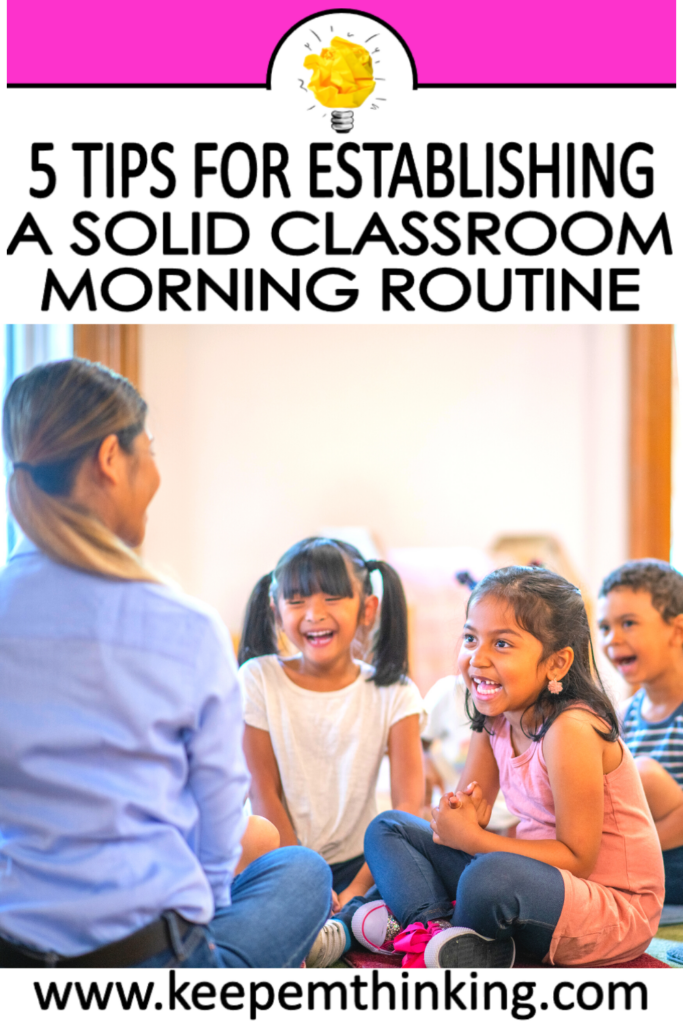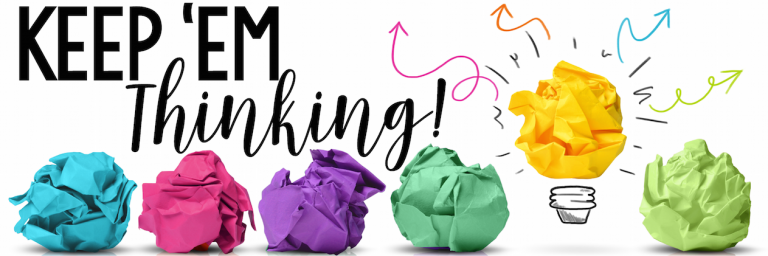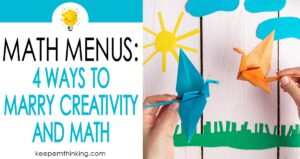Establishing a solid morning classroom routine sets the tone for your day. When routines and procedures are carefully planned, taught, and modeled, students know what is expected of them.
Begin a new school year with a plan. In the book, The First Days of School, Harry Wong says, “Student achievement at the end of the year is directly related to the degree to which the teacher establishes good control of the classroom procedures in the very first week of the school year.” Wong also says, “The effective teacher establishes good control of the class in the very first week of school.” He goes on to explain that control isn’t giving threats; it’s knowing what you are doing and having classroom procedures and routines in place.
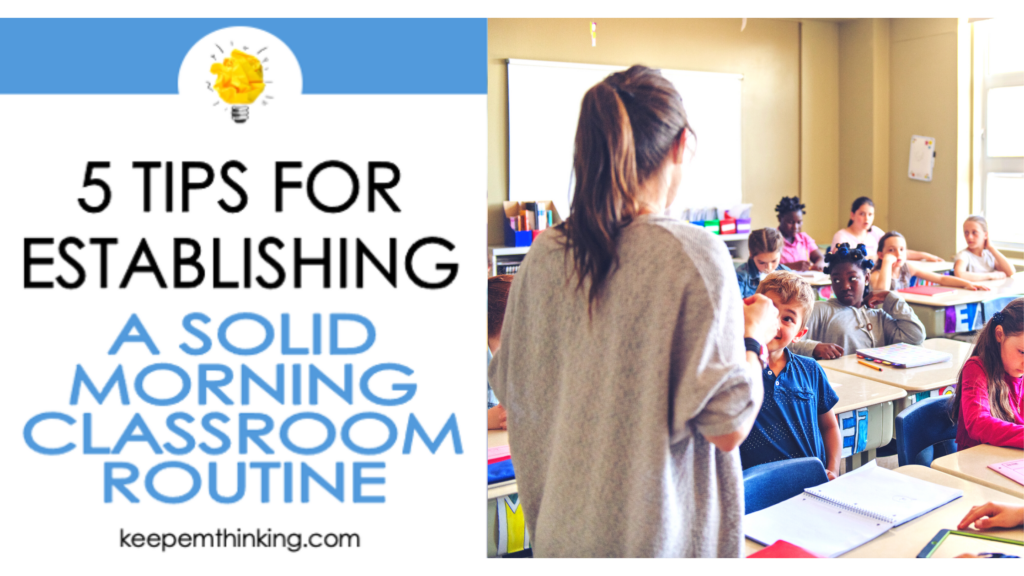
A carefully planned morning classroom routine makes it easier for students to learn. When students know what is expected of them, they will stay on task, freeing up valuable time for instruction. Students will be able to focus on their tasks, leaving less time for disruptions and behavior problems.
Setting Up Your Morning Classroom Routine
There isn’t a one-size-fits-all approach to classroom routines. Each classroom will look a little different. However, there are several procedures that you can establish that will make your classroom run smoothly.
1. Greeting Your Students
Your students want to feel welcomed and acknowledged. As a teacher, you have the power to set the tone for each child’s day.

When you positively greet your students each morning, they know they are loved and valued. This research shows that students are more engaged during the day when they are greeted by their teacher each morning.
When your students arrive, welcome them by using their names. When you use someone’s name, it creates a personal connection.
Talk to each student. You can ask them how their day started, how they are feeling, or what they would like to accomplish today.
Greet each student with a special gesture. Students can greet you with a high-five, fist bump, hug, special dance, handshake, or verbal greeting. Letting students choose a greeting allows them to pick a way that is comfortable for them.
2. Unpacking Materials
After you greet your students, they will enter your classroom and begin the day. As a part of your morning classroom routine, teach your students a routine for unpacking their materials. Here is an example:
- Unpack your backpack
- Place all homework in the designated location
- Turn in other forms (field trips, parent notes, lunch money, etc.)
- Put your things away (backpack, lunchbox, coat, etc.)
One thing you might want to consider is to make binders or folders for students. It’s a great way to keep students’ materials organized.
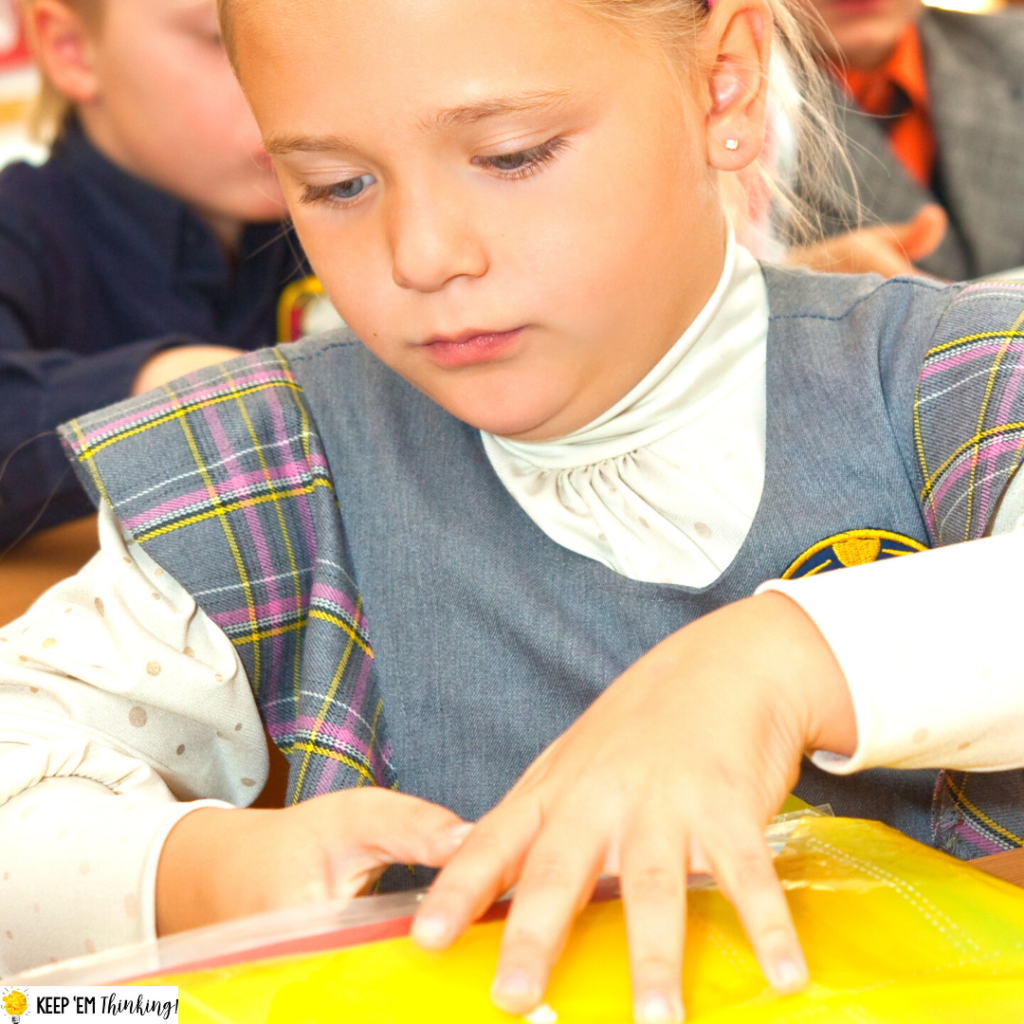
Student binders keep everything in one place – notebook paper, pencils, planners/agendas, and homework. They also keep important handouts or study guides.
Folders are another way to stay organized. Create a parent communication folder to send work papers home each night or once a week. You can include a page where parents can write notes, ask questions, or share information with you.
If you choose to use a binder or folder, have a designated day and location for students to turn it in.
3. Preparing for the Day
Classrooms need a procedure for everything. It helps the students and the teacher!
When students have unpacked, the next step in their morning classroom routine is to make sure they have everything ready for the day. Help students by creating a list of tasks they need to complete.

- Have at least 4 sharpened pencils.
- Have all materials ready (books, folders, notebooks, etc.)
Those are the basic things that students will need. However, there are many other tasks that students can do during their morning routine. Think about other tasks that students may do in the morning:
- Go to the media center and return or check out a book.
- Tell you if they need a school lunch or if they packed a lunch.
- Mark their attendance on a chart or form.
- Complete a classroom job.
- Eat breakfast in the cafeteria.
If any of those tasks apply to your classroom, make sure to include them in your morning classroom routine.
4. Morning Work
Providing morning work for your students ensures a productive classroom, rather than a chaotic one. It’s a great way to make every minute count! Use quality morning work as a part of your morning classroom routine to provide students with standards-based activities and allow them to practice academic skills.
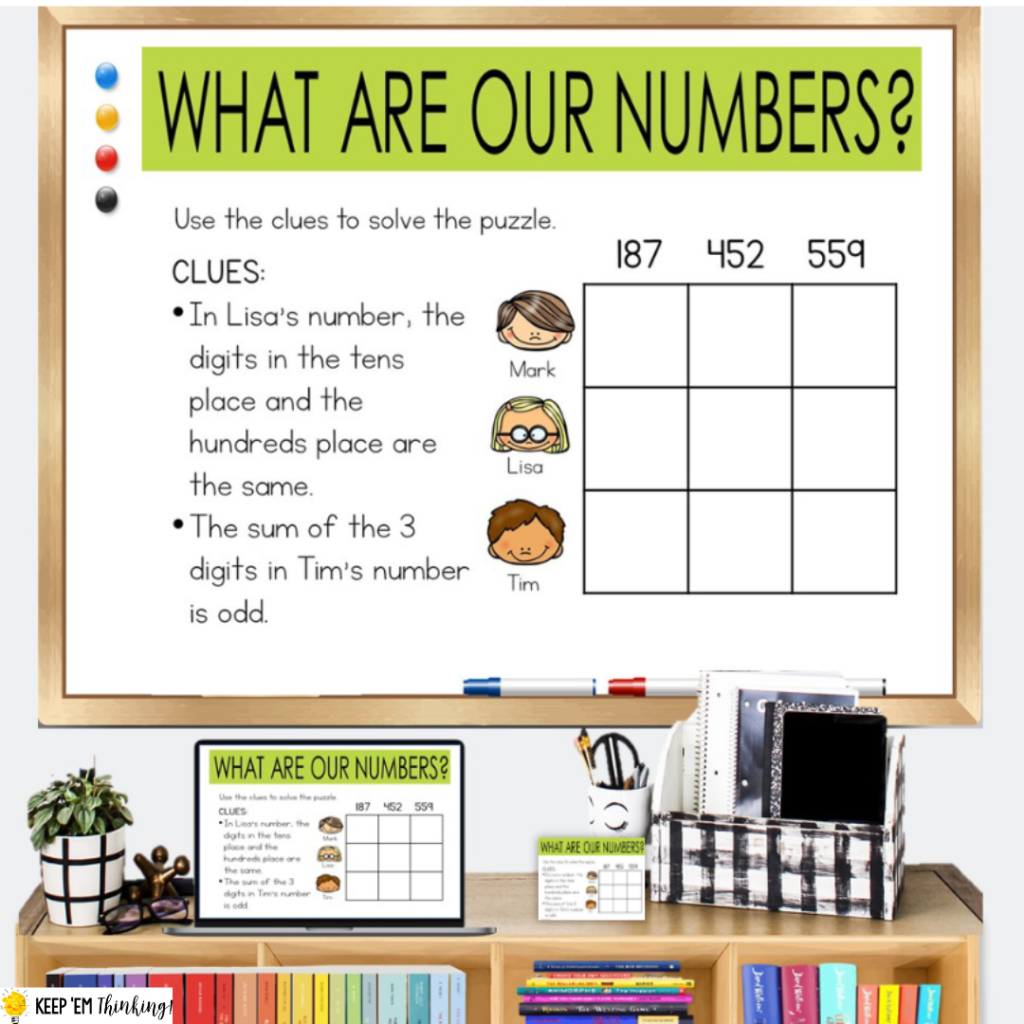
The morning work you choose should reinforce learning, challenge students, and promote independence. It should give you valuable information about students, but also be easy to manage and fun for your students.
This 2nd grade place value activity is a great choice for morning work. It contains 60 higher-order thinking challenges that students will love!
The activities help students develop a math mindset and build a deep and rich understanding of place value.
Students will analyze, compare and contrast, create analogies, use logic and deductive reasoning to solve problems, identify misconceptions, analyze errors, and apply knowledge in a new situation.
5. Early Finishers
A solid morning classroom routine will ensure that students who finish early have something to do. Create an early finishers station with activities for your students. Find activities that review standards or challenge their thinking. Students should be able to complete these activities independently so that you have time to work with students who need your help.
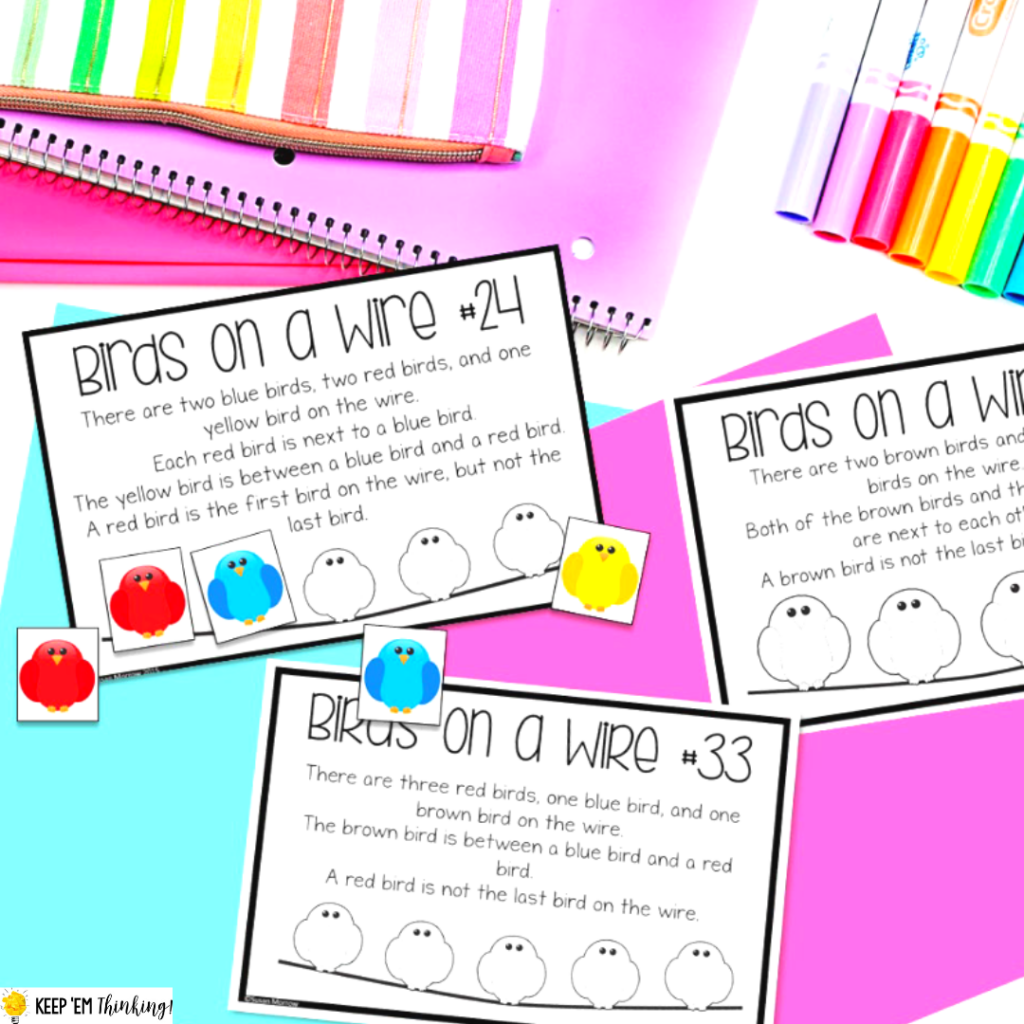
These math logic puzzles are perfect for students who finish early. Students must use logic and reasoning to create a set of birds on a wire that satisfies all the clues in the puzzle. The logic activities require them to analyze statements about relationships, evaluate a solution to see if it meets given criteria, explain their reasoning, create more than one solution to a problem, and generate their own problems and solutions.
Another great activity is this opinion writing set called, “Would You Rather?” Students read a card a make a choice about which choice they would rather do. After this, they complete a graphic organizer, plan their story, and write about their choice. It’s available in print and digital, so it’s perfect for any classroom!
And . . . these early finisher activities aren’t just for the morning. Use them any time during the day that students need something to work on while the rest of the class finishes up.
Practicing Your Morning Classroom Routine
Once you have planned and implemented your morning classroom routine, your students need to practice it over and over again.

Every minute is precious, so you may think that time spent on routines is wasted. Let me assure you that this is not the case!
A well-organized morning classroom routine only works if students know exactly what to do. Teach, model, and reinforce each step multiple times. Then do it again.
Plan to spend the first month of school repeating your routine procedures every morning.
Once students know and practice your morning classroom routine, their actions become automatic and your class will run like a well-oiled machine.
Save it for Later
Be sure to pin this to your favorite classroom Pinterest board, so you’ll be able to get back to these tips for establishing your solid morning classroom routine!
